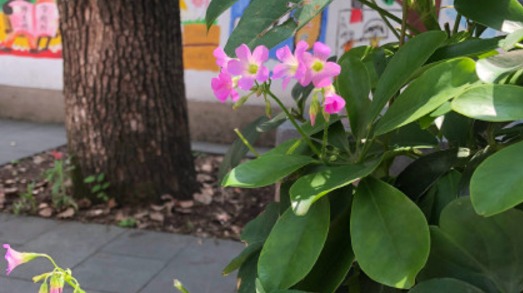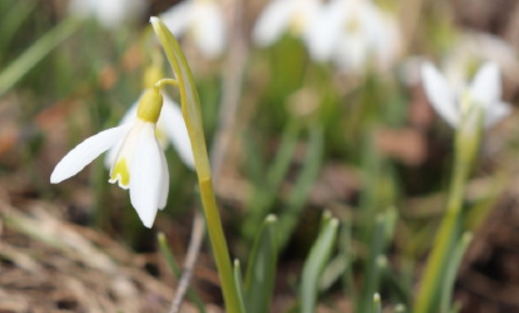What is the culture method of octopus orchid in lily subclass? How do you breed? What are the precautions?
Octopus orchid is a kind of epiphytic orchid with high ornamental value, with false bulbs and flowers blooming one after another, so what is the culture method of octopus orchid? How do you breed? What are the precautions? It is understood that octopus orchid originally grows in alpine and cold areas, and the requirement for soil is not particularly high. But generally speaking, the drainage and air permeability are better. Generally choose fine-grained volcanic rock, bark or burning soil, of course, you can also buy it directly from the florist.

What is the culture method of octopus orchid?
1. Soil requirements
Octopus orchids originally grew in alpine and cold areas, and the requirements for soil are not particularly high. But generally speaking, the drainage and air permeability are better. Generally choose fine-grained volcanic rock, bark or burning soil, of course, you can also buy it directly from the florist.
2. Temperature range
Octopus orchid grows in the forest at an altitude of 2000m and has strong adaptability to temperature. The temperature is 15-35 ℃ and grows well. It is hot in summer, avoid overheating at noon and cool down with humidity. The winter temperature should not be lower than 8 ℃. If the temperature is low, the light should be increased properly and the roots should be watered less to ensure the relative dryness of the roots.
3. How to apply fertilizer
Octopus orchid plant is larger, its own fertilizer demand is larger, especially in the vigorous growth period. Apply fertilizer once every two weeks for daily maintenance, increase the number of fertilization and increase the amount of fertilizer during the growing period. Liquid compound fertilizer is used as fertilizer. Try not to use granular fertilizer, which is not easy to be absorbed by the plant.
4. Sufficient light
Octopus orchids like bright sunlight, but not direct sunlight. Insufficient light will lead to weak plant growth and poor flowering. There is plenty of sunshine in summer, so it should be moderately shaded, especially at noon. The north does not need shade in winter and can receive sunlight all day long.
5. Watering the right amount
Octopus orchid growth needs more water, generally every 3 to 5 days to water, appropriate extension of time in winter, during the period to often spray water to the leaves to ensure air humidity. Watering and fertilizing at the same time should cooperate with each other, usually fertilizing 1-2 should be watered once.
Second, how to reproduce?
1. Ramet time
All kinds of tools are ready, and the rest is to wait. Ramets are usually selected in spring, but before flowering.
2. Ramet method
Take the plant out of the pot first and be careful not to destroy the roots. In order to operate, water control will generally begin a week before the split to ensure that the soil is soft and easier to remove from the basin.
Treat the plant, shake off the old soil from the roots, trim the roots, cut off the aged and dead roots, and then cut off the dry leaves.
Separate clumps, separate plants, see how many pots you want to divide, try not to divide too little, generally full pot of octopus orchid divided into two pots. Be careful not to hurt the buds and roots during slicing. Each clump retains at least 3 false bulbs, so the survival rate is relatively high.
Put the pot, when planting pay attention to the new bud side to the edge of the basin, to leave enough space for its growth. Planting false bulbs should not be too deep or too shallow, slightly 1-2 cm below the surface of the soil.
After ramet, put it in a cool place and do not water it for 3-5 days, lest the wound in the ramet process will not heal in time and cause rot. As long as a small amount of water is sprayed on the leaves to ensure that the plant does not shrink.
For about a week or so, the new roots and buds will grow normally, and then they will be properly maintained with other plants.
Third, what are the points for attention?
1. Insect pests of octopus orchid
The main pests of octopus orchid are shell insects, thrips, leaf mites, snails and slugs and so on.
Scale insects are often parasitic on the back of the leaves, and the thick leaves are less affected by the scale insects, while thrips mainly appear in the flowering period of octopus orchid, which is more likely to occur if they grow indoors. Leaf mites generally refer to red spiders, yellow spiders, white spiders, such as small insects, hot and dry weather is more likely to appear leaf mites, octopus orchid leaves appear gray spots, serious leaves will shrink and deform. On cloudy days or in the evening, snails and slugs often harm plants, and snails and slugs will eat the leaves and roots of octopus orchids, which should be prevented in time.
2. Pest control of octopus orchid.
In the conservation of octopus orchid, in order to prevent the occurrence of insect pests or avoid the serious and spread of insect pests, we should often check the leaves of octopus orchid to see if there are any insect pests.
When the shell insect appears, you should pay attention to ventilating the octopus orchid planting environment, and then spray the relevant insecticides. When thrips appear, trap paper can be used to catch and kill insects, and of course, professional and safe pesticides can be used to spray them carefully. The presence of spider mites can increase the wetness of octopus orchid leaves, because bugs such as spider mites like wet environments and hate them. If snails and slugs appear, they can be sprinkled with quicklime on flowerpots and tables, which can effectively drive away snails and slugs. Saturated salt water can be used instead of quicklime and can have the same effect.
Time: 2019-03-16 Click:
- Prev

How to grow garlic vine of Liriodendron family? When will it blossom? What are the values?
The nickname of garlic vine is Zhang's Ziwei, purple bell rattan, Zhang's crape myrtle, so how to grow garlic vine? When will it blossom? What are the values? According to the data, garlic vines prefer warm environment and light, so it is necessary to ensure adequate water and fertilizer when breeding.
- Next

The breeding methods and matters needing attention of Amaryllidaceae snow dripping flowers? How do you breed? What is fancy language?
Snow drop flower, also known as snow drop, snow bell flower or lily of the valley daffodils, so the breeding methods and matters needing attention of snow drop flowers? How do you breed? What is fancy language? According to the data, snow dripping flowers are suitable to grow in a cool and humid environment, which requires fertile soil, rich humus, and some basic fertilizer before cultivation.
Related
- Fuxing push coffee new agricultural production and marketing class: lack of small-scale processing plants
- Jujube rice field leisure farm deep ploughing Yilan for five years to create a space for organic food and play
- Nongyu Farm-A trial of organic papaya for brave women with advanced technology
- Four points for attention in the prevention and control of diseases and insect pests of edible fungi
- How to add nutrient solution to Edible Fungi
- Is there any good way to control edible fungus mites?
- Open Inoculation Technology of Edible Fungi
- Is there any clever way to use fertilizer for edible fungus in winter?
- What agents are used to kill the pathogens of edible fungi in the mushroom shed?
- Rapid drying of Edible Fungi

